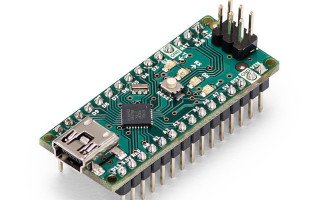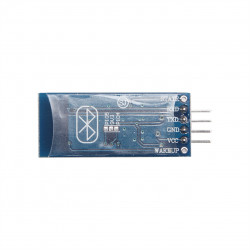
Rupture de stock
Carte de développement ARM STM32F103C8T6
- Stock: Rupture de stock
- Marque: Tiah
- Modèle: DZD006036
- Poids: 20.00g
1 400,00DA
H.T : 1 400,00DA
Description du produit:
Il s'agit d'une puce principale basée sur la carte mère STM32F103C8T6ARM. Ses fonctions sont les suivantes:
1. La carte mère est basée sur le circuit MCU le plus basique, le circuit oscillateur à cristal 8M et 32768, le circuit d'alimentation USB.
2. La carte mère est divisée en deux lignes, menant à tous les ports d'E / S.
3. Avec l'interface de téléchargement de débogage de simulation SWD, vitesse de débogage simple et pratique et rapide.
4. Utilisez l'interface USB Mirco, peut faire la communication USB et l'alimentation, l'interface USB, compatible avec l'interface de chargeur de téléphone portable Android ordinaire.
6. La marque RTC Crystal Epson est facile à démarrer et plus stable.
7. Avec des aiguilles doubles, mais les broches ne sont pas soudées par défaut. Les utilisateurs peuvent choisir la direction de soudage qui leur convient en fonction de leurs scénarios d'application.
Description de la puce:
Il s'agit d'une puce principale basée sur la carte mère STM32F103C8T6ARM. Ses fonctions sont les suivantes:
1. La carte mère est basée sur le circuit MCU le plus basique, le circuit oscillateur à cristal 8M et 32768, le circuit d'alimentation USB.
2. La carte mère est divisée en deux lignes, menant à tous les ports d'E / S.
3. Avec l'interface de téléchargement de débogage de simulation SWD, vitesse de débogage simple et pratique et rapide.
4. Utilisez l'interface USB Mirco, peut faire la communication USB et l'alimentation, l'interface USB, compatible avec l'interface de chargeur de téléphone portable Android ordinaire.
6. La marque RTC Crystal Epson est facile à démarrer et plus stable.
7. Avec des aiguilles doubles, mais les broches ne sont pas soudées par défaut. Les utilisateurs peuvent choisir la direction de soudage qui leur convient en fonction de leurs scénarios d'application.
Description de la puce:
- Type d'emballage: LQFP
- Nombre de broches: 48
- Noyau: Cortex-M3
- Fréquence de travail: 72 MHz
- Ressources de stockage: 64 Ko Flash, 20 Ko SRAM
- Ressources d'interface: 2x SPI, 3x USART, 2x I2C, 1x CAN, 37x port E / S
- Conversion analogique-numérique: 2x ADC (12 bits / 16 canaux)
- Minuterie: 3 minuteries à usage général et 1 minuterie avancée
- Téléchargement de débogage: prise en charge du téléchargement de l'interface de débogage JTAG / SWD, prise en charge de l'IAP
- RT9193: puce de régulateur de tension 3,3 V, la sortie maximale est de 300 mA
Description de l'interface:
1. Interface SWD: prise en charge de la simulation, du téléchargement et du débogage.
2. Interface USB Mirco: alimentation et communication USB, ne prend pas en charge le téléchargement.
3. Interface USART1: USART1 peut être utilisé pour télécharger des programmes ou utiliser USART1 pour la communication.
4. Interface de broche MCU: sortez toutes les broches du port d'E / S pour faciliter la connexion avec les périphériques.
5. Interface d'entrée et de sortie d'alimentation 5 V et 3,3 V: couramment utilisée pour l'alimentation externe, ou mise à la terre avec d'autres modules
Description des autres équipements:
1. Voyant d'alimentation (PWR): l'état du voyant d'alimentation peut déterminer si l'alimentation est stable.
2. LED utilisateur (PC13): pratique pour le test de sortie d'E / S ou le fonctionnement du programme d'instructions.
3. Commencez à sauter pour sélectionner le mode de programmation: (1, mémoire flash utilisateur 2, SRAM 3, mémoire système).
4. Bouton de réinitialisation: réinitialisez la puce pour le programme utilisateur.
5. Oscillateur à cristal 8M: La fréquence peut être réglée de sorte que la fréquence principale du système soit 72MHz.
6. Oscillateur à cristal de 32,768 KHz: peut être utilisé pour le RTC intégré ou l'étalonnage.
GRBL
Mach3






















